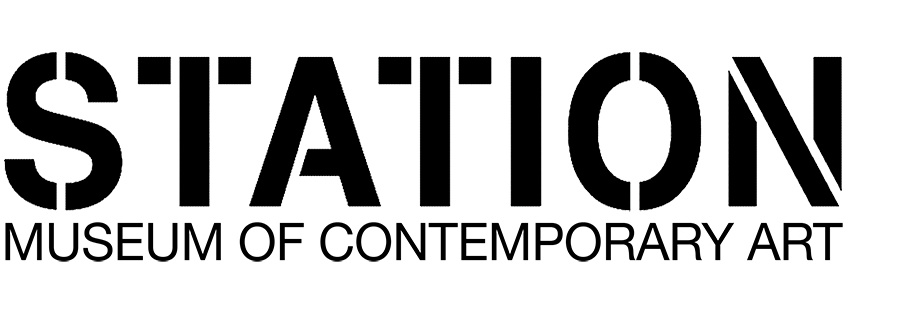
- 1502 Alabama St.
- Houston, TX 77004
- USA
- 713-529-6900
- station.museum.houston.tx@gmail.com
- Closed Monday & Tuesday
- Open Wednesday - Sunday, 12PM - 5PM
- Free Admission!

Luz Elena Castro, “Caras de Colombia Faces of Colombia”, 1981 – 2007, digital impressions on vinyl mesh curtains and mixed media
For more than forty years Colombia has been trapped in a gyrating cycle of violence. The lives of millions of civilians have been devastated by dire poverty and unending war. Power in Colombia is concentrated in the hands of very few families. The oppressive shadow of colonialism still blinds the minds of the majority — forty years of failed peace talks, forty years of frustrated hope.
Colombians run around like chickens with their heads chopped off, in the middle of a very confusing war, constantly discussing democracy yet facing daily brutality at the hands of different armed groups: common criminals, “narco-traficantes,” national military forces, paramilitaries, and guerrillas – with the overt and covert support of the United States – leaving in their collective wake displaced, kidnapped, missing, and murdered citizens.
These photo-curtains encircles us with some of the faces from a half century of civil wars, in a country were life is beautiful, but at the same time, it is intense, uncertain and dangerous. These faces show dignity and resilience under abysmal conditions.
You are welcome to open the curtains and enter into this intimate circle of the reality of today’s Colombia.
Photo reporters are often treated by the art world as less than full artists and in the print journalism world as less than fully qualified journalists. The democracy of photography, the idea that anyone can pick up a camera and make the kinds of images we see in newspapers – the old saying “f8 and be there” – in part explains why graphic journalists have too often been treated as mere camera operators instead of the sensitive and highly skilled intuitive emotional observers they are.
The generous heart and magical juxtapositions evidenced in Luz Elena Castro’s photographic reportage clearly demonstrates the impoverishment of such categorization. Unlike artists who have great latitude to direct and manipulate or construct an image in order to express an idea, the photojournalist is principally a witness. Yes photojournalists have points of view and make choices about lenses and vantage point and depth of field and the “decisive moment.” But they are also held to ethical standards that set them apart and distinguish their work as visual witnesses. This is why the digital manipulations that are commonplace in the realm of photo illustration provoke such vociferous condemnation in photo reportage. And so they should.
Photographers like Luz Elena Castro command our respect and restore our hope because they have earned a sacred trust. Whether in the line of fire, crossing the frontiers of intimacy with complete strangers, or taking on themes that are emotionally or visually challenging, Luz Elena never loses sight of her obligation to her craft and mission: the vital importance of keeping her fellow Colombians informed with lyrical and honest images. Her photographs of political figures like former Colombian president Cesar Gaviria or of events and social issues made during her newspaper career served to open the eyes of her fellow Colombians daily as these issues unfolded. Her vision and spirit of public service lead her to create an exhibition for the Luis Angel Arango Library in 1990-91 and later donate this archive as historical patrimony to the Colombian National Archives. A decade and a half later, the existence of this collection is enabling curators Alberto Sierra and Juan Alberto Gaviria Velez to imply if obliquely a meditation on 21st century Colombian reality through the contemplation of Luz Elena’s evocative visual record of Colombia’s recent past.
– Donna DeCesare, from the Retrospective Catalog of Luz Elena Castro, 2006